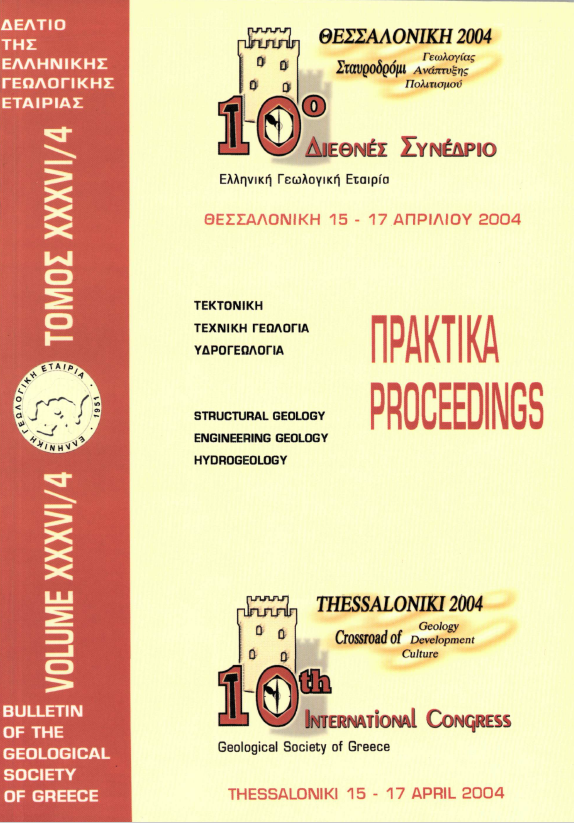LANDSLIDE AT TSAKONA AREA IN ARKADIA PREFECTURE. GEOLOGICAL CONDITIONS AND ACTIVATION MECHANISM
Abstract
The geological conditions of the landslide's area, at Tsakona, in Arkadia Prefecture, are examined, as well as the factors that influenced the landslide's evolution. The landslide occurred at a distance of 15 km south of Megalopoli, on the New Highway, connecting Tripoli to Kalamata and constitutes one of the larger road landslides that have ever taken place. It occupies an area of a length of 1200m and a width of 300m. Geotectonically the landslide's region is placed in a block of the Pindos zone, thrusted on the Gabrovo-Tripoli zone. The geological formations that comprise the closer geological frame, consist of the formation of "First Flysch", Upper Jurassic - Lower Cretaceous and of the Upper Cretaceous limestones. The geological factors that drastically influenced the landslide's activation are lithological, tectonic, hydrogeological and morphological. The mainly siltstone lithology of the flysch, the intense tectonic deformation that occurred during the alpidic horogenetic phase, the morphological depression that is formed by the landslide's region and the large quantities of groundwater supplied by the uphill limestone, are the main geological reasons that activated the landslide. It should be emphasised that the activation and evolution of the landslide were greatly influenced by human activity during the road construction.
Article Details
- How to Cite
-
Σωτηρόπουλος Λ., Λυμπέρης E., Σιγάλας Α., Ντουρούπη Α., Προβιά Κ., & Ντουνιάς Γ. (2004). LANDSLIDE AT TSAKONA AREA IN ARKADIA PREFECTURE. GEOLOGICAL CONDITIONS AND ACTIVATION MECHANISM. Bulletin of the Geological Society of Greece, 36(4), 1862–1871. https://doi.org/10.12681/bgsg.16661
- Section
- Engineering Geology, Hydrogeology, Urban Geology

This work is licensed under a Creative Commons Attribution-NonCommercial 4.0 International License.
Authors who publish with this journal agree to the following terms:
Authors retain copyright and grant the journal right of first publication with the work simultaneously licensed under a Creative Commons Attribution Non-Commercial License that allows others to share the work with an acknowledgement of the work's authorship and initial publication in this journal.
Authors are able to enter into separate, additional contractual arrangements for the non-exclusive distribution of the journal's published version of the work (e.g. post it to an institutional repository or publish it in a book), with an acknowledgement of its initial publication in this journal. Authors are permitted and encouraged to post their work online (preferably in institutional repositories or on their website) prior to and during the submission process, as it can lead to productive exchanges, as well as earlier and greater citation of published work.



